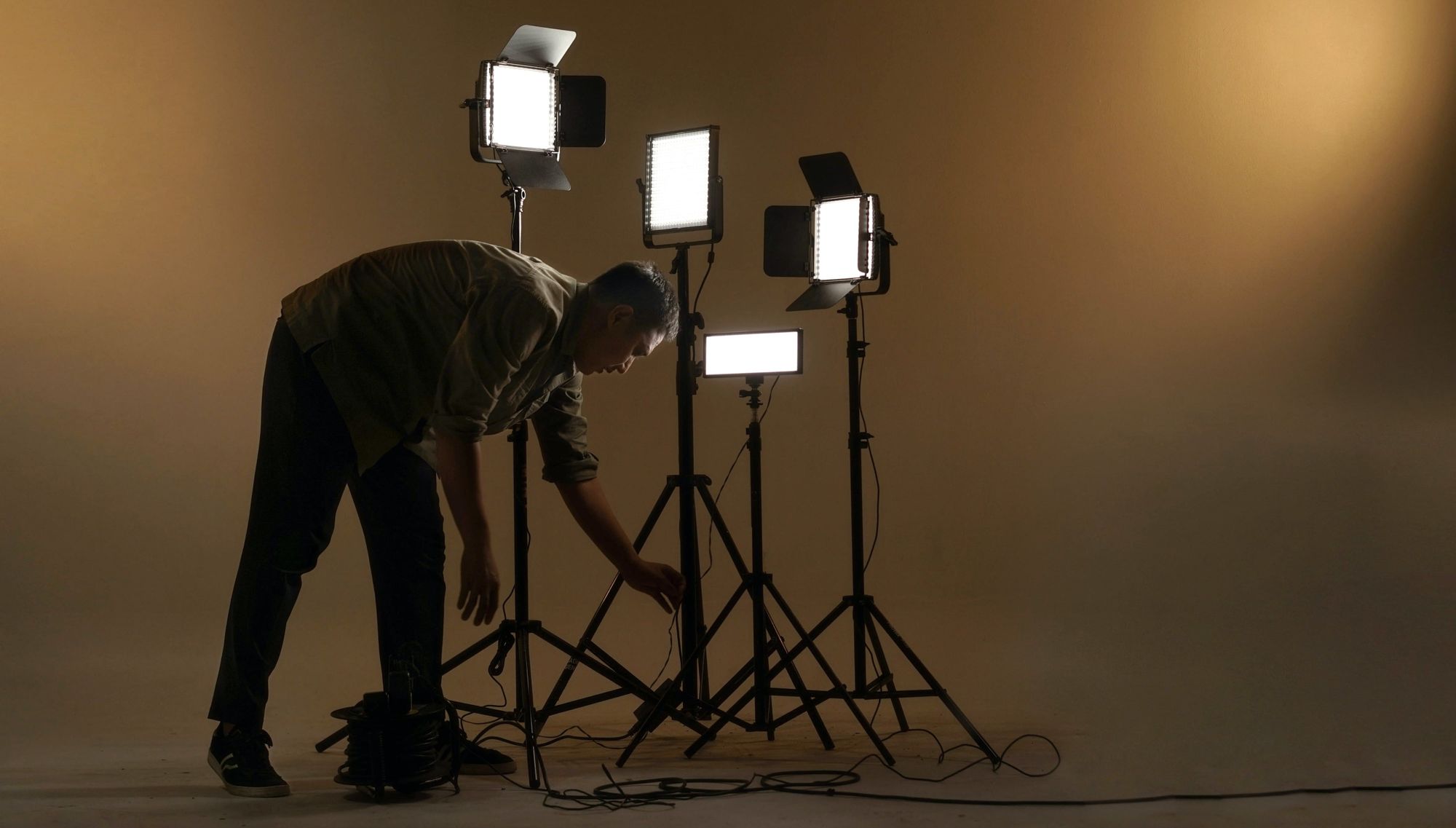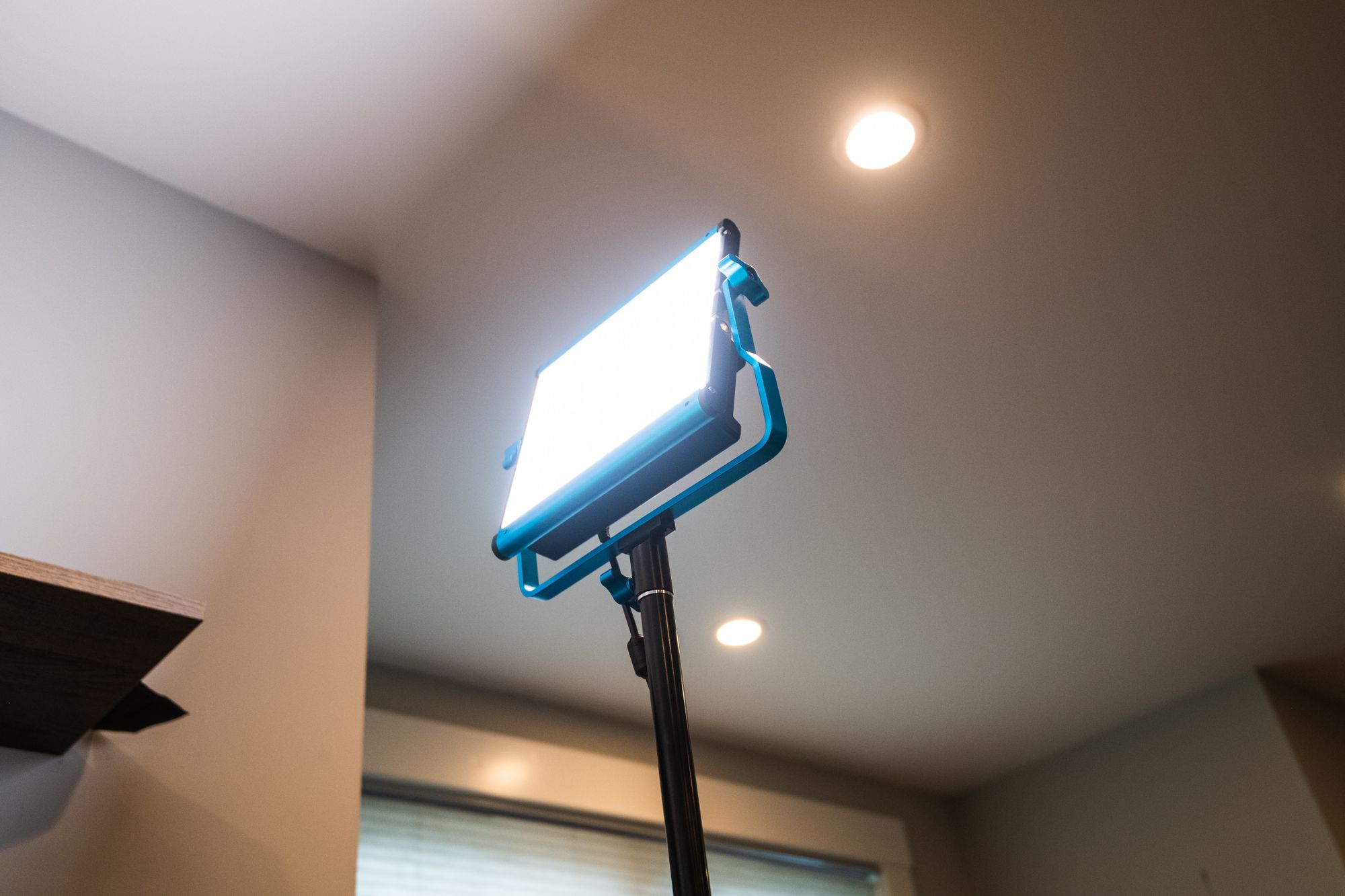What Is Bounce Lighting in Film? Definition, Creative Uses & Tips.
Rent film gear from local filmmakers.

Rent film gear from local filmmakers.
Some will claim that bounce lighting is one of the most excellent tools cinematographers have to alter the quality of light.
But what is bounce lighting? And most importantly, how can it help you?
What is bounce lighting?
Bounce lighting is nothing else than a lighting technique that channels the light from another source and bounces it off onto a surface, using various objects.
If you bounce your light, you'll get a diffused lighting, which in return results in a more extensive spread of light than its initial source is caused.
Bounce lighting is crucial when you want to stay clear of harsh shadows or moderate the light you are already using.
So, the main idea is that by bouncing light, you will change the small light source that generally produces harsh light into a more prominent light source that produces soft and flattering light.

What can be used to create bounce lighting?
Now that we can understand what bounce lighting is, let's decipher what we mean by 'using various objects'.
A common misconception is that, to create this effect, an expensive setup is needed. So, to debunk this thought, here are some types of objects you can use for your DIY setup:
- Bounce card
- Reflector board
- Fabric & Linen sheets
- Clothing
- Walls & ceilings
The idea is that if it's white enough, it will work. Once you have these ready, they will magically direct and bounce your light source uniformly, giving you the movielike look you are going for.
Why use bounce lighting in film
There are plenty of reasons for you to start incorporating bounce lighting into your shooting routine. Here we listed 4:
1. To diffuse light in your scene
Want to shoot in narrow or confined spaces?
By diffusing the light, you will be able to have soft images and shoot a scene with evenly spread light.
2. To partner up with your natural lighting
Picture this: you are at a wedding, no matter if you are friends with the couple or employed by them, you will want the best lighting conditions.
Shooting at events under ambient or low light, using a technique meant to take the low light you are given and transform it into a significant light source is your go-to.
3. To save money
But, what if you're on a budget?
As we saw above, creating a bounce lighting setup can be very budget-friendly. You can easily access the materials you need by renting lighting equipment on Wedio.
Or, if you're feeling more old-fashioned, go to your local fabric shop to get some white fabric or linen sheet or even your nearby hardware store where you might be able to find a board that will bounce the light off correctly.
4. To save space
If budget is not the problem for you, but space is – bounce lighting can be your answer once more.
All you have to do is set up the leading light pointing to the subject and any auxiliary lights, which can be bounced over to your subject using any of the objects mentioned earlier.

9 Tips for bounce lighting in film
1. Minor tweaks can have a huge impact
Whenever you are using the bounce lighting technique, minor adjustments like changes to the angle of the light or the bounce board, how far the light source is to the bounce surface.
2. Adjust your bounce lighting setup
What's better than using one technique and getting one good result?
Using multiple techniques and getting an even better result!
3. Experiment with coloured bounce surfaces
If adding a little flair is what you feel, try using a purple coloured board to reflect a purple tone to your subjects.
But do not forget that colourful paint or wallpaper can faintly modify the colour of the light on your subject. If you have a particular colour palette in mind, keep an eye out for this one.
4. Beware! Don't use hot lights
Fabrics or bounce cards can burn or even catch fire if they are exposed to high heat levels. Try low-temperature lights instead: LEDs, for instance.
5. For group portraits, use multiple reflectors
Why not try adding a couple of smaller reflectors to illuminate your group portraits in a unique way.
6. Bounce strong backlight as a fill light
Have you ever heard of the rim lighting effect? A beautiful way to create an outline of your subjects using the backlight.
Bouncing a strong backlight would help you achieve this effect. However, if displaying the background elements better is what you are looking for, bouncing the light is still your answer.
7. Experiment with golden or metallic reflectors
What about creating a natural warm look and adding a sunset light feel with golden surfaces?
It sounds like the beginning of a gorgeous photoshoot to me!
8. Try using your props to bounce light
Get creative with your bounce light!
An opened notebook under the face, sitting on the floor or leaning against a white wall- all of these examples double as a lighting accessory and an element of your image.
9. Make room for DIY bounce boards
Getting creative and experimenting with DIY bounce boards is always an excellent way to start trying bounce lighting out.

What's next? Learn all the essential film lighting techniques
Yes, of course, bounce lighting can do wonders, but as shocking as it may sound, it's not the only film lighting technique out there. Ever wondered why film sets are always filled with many different light sources?
Choosing the proper lighting techniques or the best mix will create cinematic shots. Key lighting, Fill lighting, Backlighting, Side lighting and many more are essential film lighting techniques that I can enumerate here, but why do that when you can explore all the film lighting techniques here.
Are you already well-versed in film lighting, you can read our article on Filmmaking to better understand the basics of filmmaking, and how lights (among other things) can improve a film.
Bounce Lighting FAQ
What is bounce lighting in film?
Bouncing the light from a strong light source towards your subject or scene using a reflector or any light-coloured surface.
What can you use to bounce light?
Objects such as white walls, ceilings, white fabrics, reflector boards.
When should bounce light be used in filmmaking?
When you want to diffuse or soften the light to create natural or soft lighting styles.
How does bounce lighting affect your film's look?
It creates stylised and natural-looking film scenes.






















